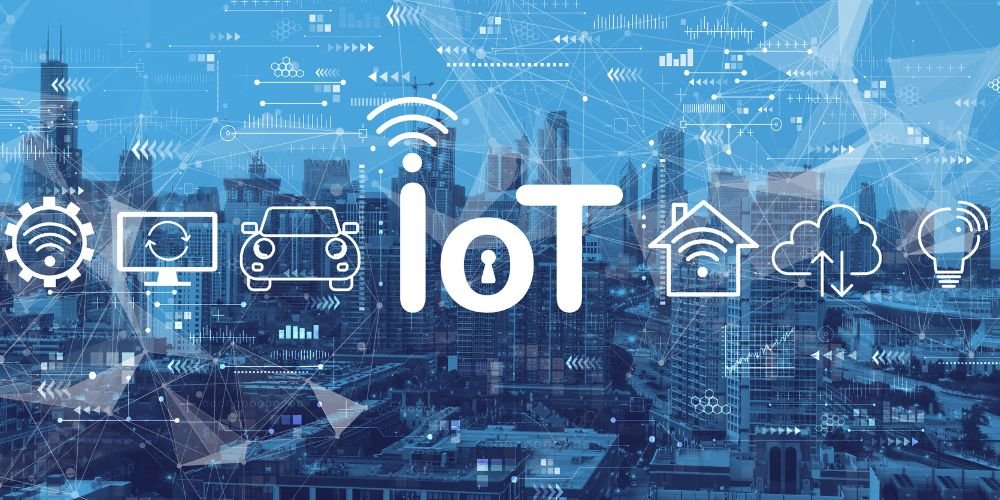The Internet of Things (IoT) has rapidly emerged as a transformative force across various industries. Its potential to optimize operations, enhance decision-making, and improve customer experiences is immense. However, realizing these benefits requires a well-thought-out approach to IoT device procurement and management.
Guide to Procure and Manage IoT Devices
This comprehensive guide will walk you through the intricacies of procuring and managing IoT devices, ensuring your deployment is secure, efficient, and aligned with your organization’s goals.
Define Your IoT Objectives and Use Cases
Begin your IoT journey by clearly understanding your objectives and use cases. Take time to delve into the following:
- Identify Goals: Understand what your organization aims to achieve through IoT implementation. Are you seeking to optimize resource utilization, enhance product quality, or streamline supply chain operations?
- Use Case Analysis: Delve into specific use cases where IoT can make a tangible impact. These could range from real-time logistics asset tracking to predictive manufacturing maintenance.
Create an IoT Device Strategy
With your objectives and use cases defined, it’s time to formulate a comprehensive IoT device strategy:
- Technology Requirements: Specify the technical requirements for IoT devices, including sensors, communication protocols, and data storage capabilities. Consider factors like scalability and compatibility with your existing IT infrastructure.
- Scalability: Plan for scalability from the outset. As your IoT network grows, your strategy should accommodate adding more devices and data points.
- Data Management: Determine how data generated by IoT devices will be collected, stored, and analyzed. Establish data governance practices to ensure data integrity and security.
Conduct Vendor Research and Selection
Choosing the right IoT device vendors is a pivotal decision in the procurement process:
- Vendor Assessment: Conduct thorough research to assess potential vendors. Evaluate their track record, reliability, and reputation within the IoT industry. Verify their adherence to security standards and data privacy regulations.
- Pilot Programs: Consider running pilot programs with selected vendors to gain firsthand experience with their devices. Pilots can reveal insights into device performance, ease of integration, and alignment with your use cases.
Evaluate IoT Device Security
Security is non-negotiable when it comes to IoT device procurement:
- Security Features: Scrutinize the security features offered by IoT device vendors. Ensure that devices implement robust encryption, secure authentication mechanisms, and the ability to receive timely firmware updates.
- Data Privacy: Verify that IoT devices align with data privacy regulations regarding data collection and transmission. Data should be encrypted during transmission and storage to safeguard against breaches.
Develop a Procurement Plan
A well-structured procurement plan is essential to guide the acquisition of IoT devices:
- Budgeting: Allocate a budget that covers the purchase of devices and associated costs such as sensors, network infrastructure, and ongoing maintenance.
- Procurement Timeline: Create a timeline that outlines the stages of procurement, from vendor selection to device deployment—factor in lead times and installation requirements.
Procure and Deploy IoT Devices
Execute your procurement plan by procuring and deploying IoT devices:
- Purchase Orders: Place orders with selected vendors, ensuring that you acquire the required quantity of devices and any necessary accessories.
- Installation: Deploy IoT devices according to your use cases, considering their physical location, network connectivity requirements, and power sources.
Implement IoT Device Management
Effective device management is essential for maintaining optimal performance and security:
- Remote Monitoring: Implement a remote monitoring system that provides real-time visibility into the health and status of IoT devices. It allows for proactive issue resolution and maintenance.
- Firmware Updates: Regularly update device firmware to patch vulnerabilities and enhance device functionality. Automated firmware updates can streamline this process.
Data Analytics and Insights
Leverage the data generated by IoT devices to derive actionable insights:
- Data Analysis Tools: Utilize data analytics platforms to process and analyze IoT data. Extract meaningful insights that inform decision-making and drive improvements in operations and processes.
- Predictive Maintenance: Implement predictive maintenance strategies based on IoT data to reduce downtime, optimize asset utilization, and lower maintenance costs.
Ensure Regulatory Compliance
Stay compliant with IoT-related regulations and standards:
- Data Privacy: Comply with data protection regulations such as GDPR, HIPAA, or CCPA, depending on your industry and data handling practices.
- Industry Standards: Adhere to industry-specific standards and certifications that pertain to your IoT use cases. Compliance demonstrates a commitment to best practices.
Continuous Improvement
IoT device procurement and management is an ongoing process that demands continuous improvement:
- Performance Monitoring: Continuously monitor the performance of IoT devices and assess their impact on your organization’s objectives. Identify areas where enhancements or optimizations are required.
- Feedback Loop: Establish a feedback loop that includes end-users and stakeholders. Solicit their input to gain insights into user experiences and to pinpoint opportunities for refinement and innovation.
Conclusion
Procuring and managing IoT devices is a complex but rewarding endeavor that can transform your organization’s operations and drive innovation. This step-by-step guide enables you to navigate the IoT procurement process effectively, from defining your objectives to continuous improvement. Embrace the potential of IoT technology to enhance your business processes, gain valuable insights, and stay competitive in the digital age.










